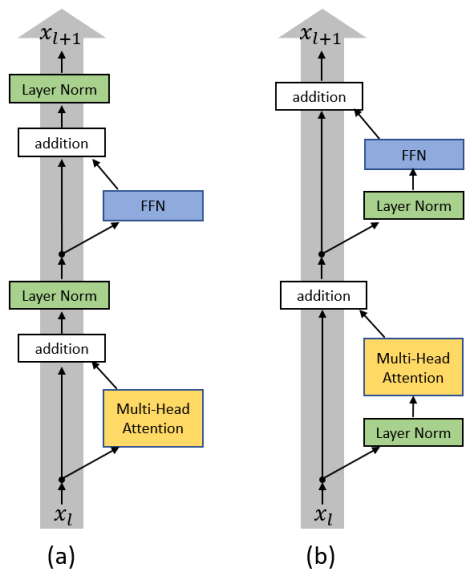Post Norm 和 Pre Norm 区别

-
[[Pre Norm]] :<->
-
第二项的方差由于有 norm 不会随层数变化,x 的方差在主干上随层数累积。到达深层后,单层对主干的影响很小,不同层在统计上类似。
-
-
这样训练的深层模型更像是扩展模型宽度,相对好训练。
-
-
[[Post Norm]] :<->
pre 和 post 具体含义 #card
-
先 norm 再残差 [[Pre Norm]] :<->
-
先残差再 norm [[Post Norm]] :<->
[[DeepNet]]
Ref
Post Norm 和 Pre Norm 区别
https://blog.xiang578.com/post/logseq/Post Norm 和 Pre Norm 区别.html